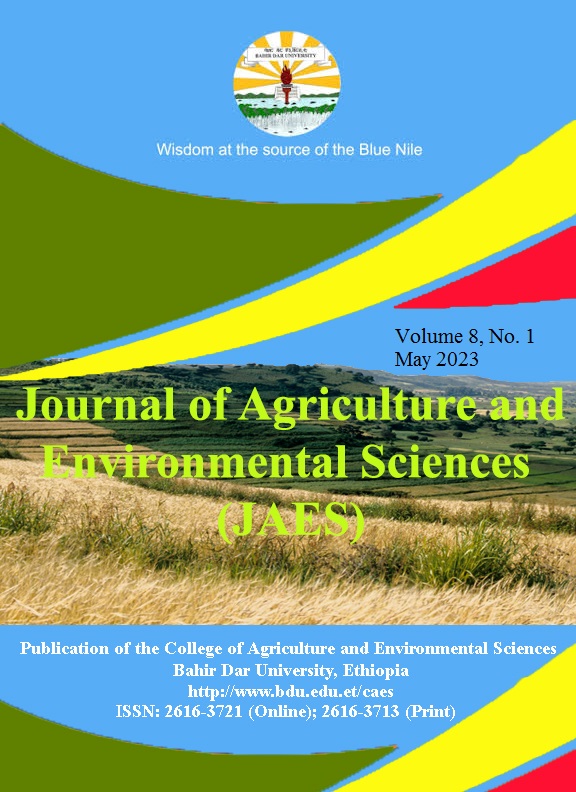Conformation traits of crossbred dairy cows in the South Gondar Zone, Amhara Region, Ethiopia
Abstract
Conformational variations between and within crossbred dairy cattle populations have significant economic and socio-cultural implications for producers. Therefore, this study was conducted to characterize conformation traits of crossbred dairy cows in the South Gondar zone, Amhara Region, Ethiopia. A total of 204 lactating crossbred dairy cows were selected for measurement purposes. The independent variables considered were location, stage of lactation, genotype level, and parity while linear body conformations (Stature (STA), Chest Width (CW), Body Depth (BW), Body Length (BL), Rump Length (RL), Heart Girth (HG), Neck Length (NL), and Neck Circumferences (NC)), linear udder conformation traits (Rump Width (RW), Udder Depth (UD), Udder Width (UW), Udder Circumferences (UC), Rear Udder Height (RUH), Teat Length (TL)), non-linear body conformations (Angularity (ANG), Rear Legs Rear View (RLRV), Rear Legs Side View (RLSV), Body Condition Score (BSC)) and non-linear udder conformation traits (Fore Udder Attachment (FUA), Rear Teat Placement (RTP), Front Teat Placement (FTP)), Teat Thickness (TT)) were the dependent variables. Data was analyzed using the General Linear Models procedure (GLM) of the Statistical Analysis System (SAS, 2004). The overall STA, CW, BD, BL, RL, HG, NL, NC, RW, RUH, UD, UW, UC and TL were 127.81±5.4 cm, 23.1±3.1cm, 99.2±4cm, 120.45±4.6cm, 32.2±3.9cm, 168.32±5.1cm, 56.7±3.2 cm, 92.88±3.6cm, 17.39±2.65cm, 14.27±1.8cm, 18.02±2.7cm, 16.85±2.5cm, 59.16±4.3cm and 4.65±0.88cm, respectively. Parity had a significant effect on linear conformational trait characteristics of crossbred dairy cows at (p<0.01) and (p<0.001) significant levels except for CW, BD, RL, and RUH. Similarly, genotype level had a significant effect on linear conformational trait characteristics of crossbred dairy cows at (p<0.05), (p<0.01), and (p<0.001) significant levels except for CW, RL, NL, and RUH but the stage of lactation had no significant effect (p>0.05) on linear body conformation except STA and had a significant effect (p<0.01) on linear udder traits except UD and TL of crossbred dairy cows. Therefore, selecting dairy type traits could be an ideal option to improve cow productivity and enterprise profitability. However, future studies with large populations and various genotype levels are required to associate conformation with reproductive and productive traits.
Copyright (c) 2023 Journal of Agriculture and Environmental Sciences

This work is licensed under a Creative Commons Attribution-NonCommercial-NoDerivatives 4.0 International License.
Authors who publish with this journal agree to the following terms:
- Authors retain copyright and grant the journal right of first publication with the work simultaneously licensed under a Creative Commons Attribution License that allows others to share the work with an acknowledgement of the work's authorship and initial publication in this journal.
- Authors are able to enter into separate, additional contractual arrangements for the non-exclusive distribution of the journal's published version of the work (e.g., post it to an institutional repository or publish it in a book), with an acknowledgement of its initial publication in this journal.
Authors are permitted and encouraged to post their work online (e.g., in institutional repositories or on their website) prior to and during the submission process, as it can lead to productive exchanges, as well as earlier and greater citation of published work (See The Effect of Open Access).


